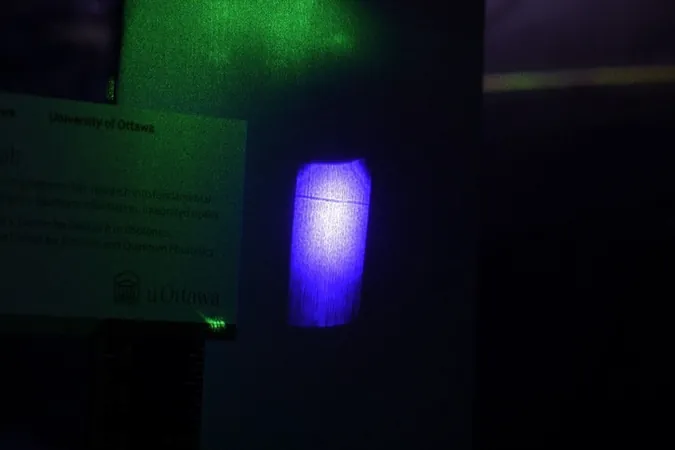
Groundbreaking Research Reveals Lasers Can Actually Cast Shadows – A Game Changer in Optics!
2024-11-18
Author: Jessica Wong
Groundbreaking Research Reveals Lasers Can Actually Cast Shadows – A Game Changer in Optics!
In a stunning revelation that sounds like it's plucked straight from the pages of a science fiction novel, scientists have demonstrated that lasers, typically perceived as mere beams of light, can cast shadows under certain experimental conditions. This groundbreaking discovery, unveiled by an international team of researchers from Canada and the United States, has the potential to redefine our understanding of light and shadows.
Published in the prestigious journal Optica on November 14, the team's work showcases a unique phenomenon where a laser beam can act like a physical object, capable of obstructing other light sources and creating a visible shadow. This striking outcome has significant implications for existing technologies that utilize lasers, including things like fiber optic cables which are crucial for high-definition televisions and lightning-fast internet connections.
Raphael A. Abrahao from Brookhaven National Laboratory explained, 'The idea that laser light could cast a shadow was long considered impossible because light normally passes through other light without any interaction. Our demonstration challenges this fundamental perception of how shadows work.'
Intriguingly, the idea for the experiment emerged from a casual lunch conversation. The researchers noticed that some 3D diagrams represented laser beams as solid, cylindrical objects that cast shadows, prompting them to investigate whether such a phenomenon could be replicated in a laboratory environment.
The pivotal experiment involved directing a powerful green laser into a ruby crystal while illuminating it with a perpendicular blue laser. The interaction changed the properties of certain parts of the ruby crystal, enabling it to absorb more blue light and, consequently, cast a shadow that mirrored the shape of the green laser.
How could the researchers confirm that this was indeed a shadow? The criteria matched perfectly: it was clearly visible, fitted the contours of the surface beneath it, and aligned with the position and shape of the green laser beam casting it. Impressively, the scientists found they could manipulate the shadow's contrast, achieving starkness levels comparable to those of a tree's shadow on a sunny day.
Yet, the researchers noted an intriguing caveat. They explained that the laser shadow effect relied on the ruby gem's specific properties, leaving them to ponder whether the shadow was due to the laser itself or the atomic structure of the ruby. This opens up new questions about the interactions between light and matter, and how we understand the behavior of light at fundamental levels.
While the practical implications of this discovery may not be immediately apparent in everyday applications, it signals a promising avenue for future research and technological innovation. As we look ahead, the experiment encourages both scientists and curious minds alike to examine the very fabric of our optical experiences more closely – who knows what else might be lurking in the shadows, or what new revelations in laser technology are just beyond the horizon?
Stay tuned, because the future of optics is lit!






 Brasil (PT)
Brasil (PT)
 Canada (EN)
Canada (EN)
 Chile (ES)
Chile (ES)
 España (ES)
España (ES)
 France (FR)
France (FR)
 Hong Kong (EN)
Hong Kong (EN)
 Italia (IT)
Italia (IT)
 日本 (JA)
日本 (JA)
 Magyarország (HU)
Magyarország (HU)
 Norge (NO)
Norge (NO)
 Polska (PL)
Polska (PL)
 Schweiz (DE)
Schweiz (DE)
 Singapore (EN)
Singapore (EN)
 Sverige (SV)
Sverige (SV)
 Suomi (FI)
Suomi (FI)
 Türkiye (TR)
Türkiye (TR)